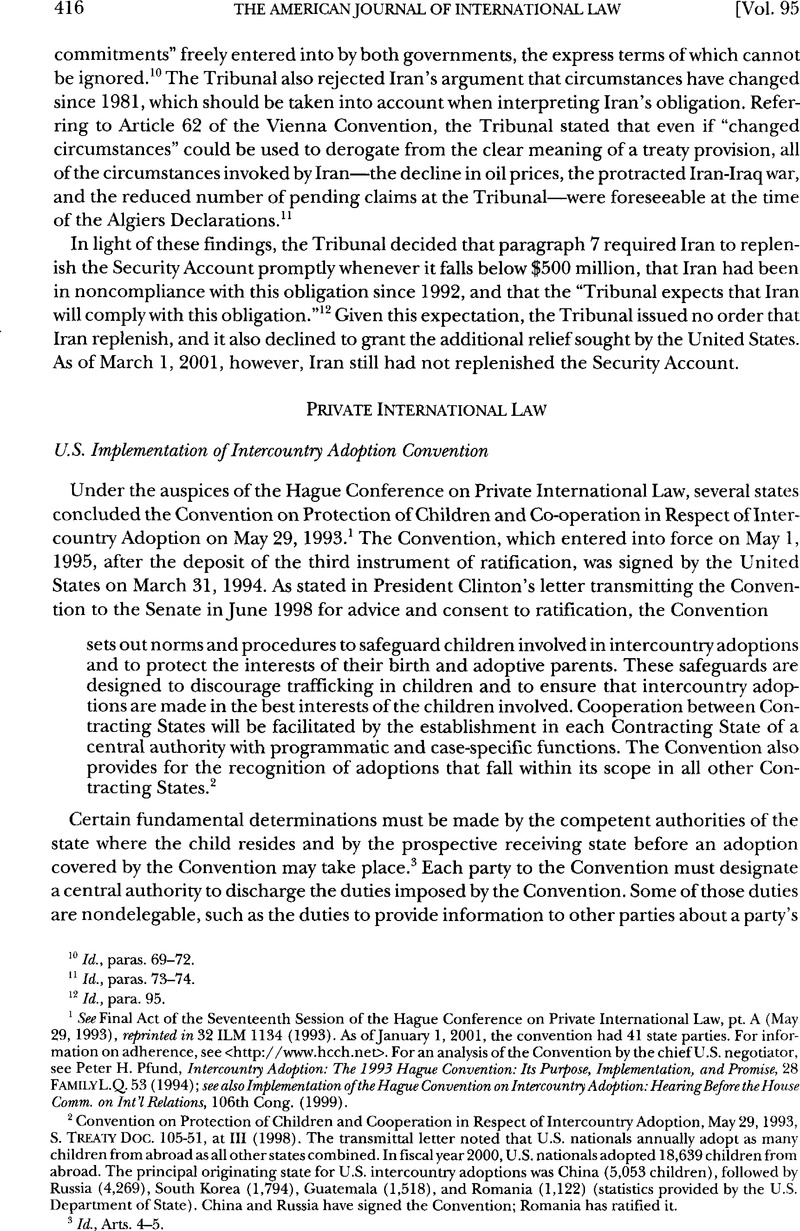No CrossRef data available.
Published online by Cambridge University Press: 10 March 2017

1 See Final Act of the Seventeenth Session of the Hague Conference on Private International Law, pt. A (May 29, 1993), reprinted in 32 ILM 1134 (1993). As of January 1, 2001, the convention had 41 state parties. For information on adherence, see <http://www.hcch.net>. For an analysis of the Convention by the chief U.S. negotiator, see Peter, H. Pfund, Intercountry Adoption: The 1993 Hague Convention: Its Purpose, Implementation, and Promise, 28 Family L. Q. 53 (1994)Google Scholar; see also Implementation of the Hague Convention on Intercountry Adoption: Hearing Before the House Comm. on Int’l Relations, 106th Cong. (1999).Google Scholar
2 Convention on Protection of Children and Cooperation in Respect of Intercountry Adoption, May 29, 1993, S. Treaty Doc. 105-51, at III (1998). The transmittal letter noted that U.S. nationals annually adopt as many children from abroad as all other states combined. In fiscal year 2000, U.S. nationals adopted 18,639 children from abroad. The principal originating state for U.S. intercountry adoptions was China (5,053 children), followed by Russia (4, 269), South Korea (1,794), Guatemala (1,518), and Romania (1,122) (statistics provided by the U.S. Department of State). China and Russia have signed the Convention; Romania has ratified it.
3 Id., Arts. 4-5.
4 Id., Arts. 6-13.
5 Id., Arts. 15-21.
6 146 Cong. Rec S8866 (daily ed. Sept. 20, 2000).
7 Intercountry Adoption Act of 2000, Pub. L. 106-279, 114 Stat. 825 (2000).
8 Information Paper Prepared by the Delegation of die United States, 1-4 (undated) (on file at GWU).